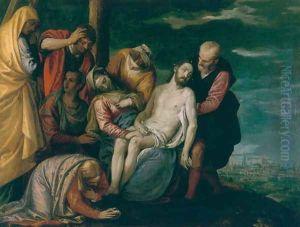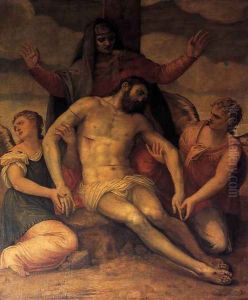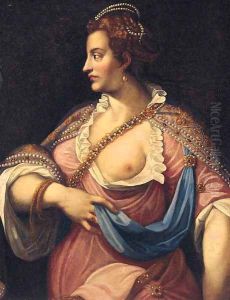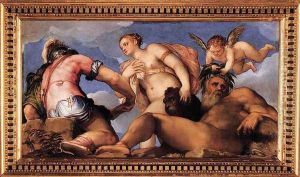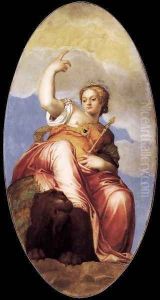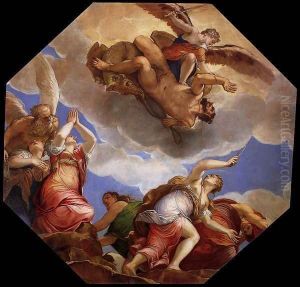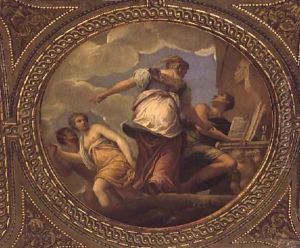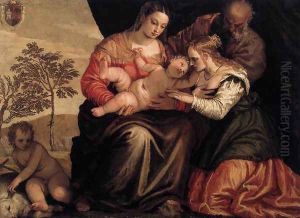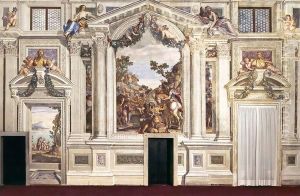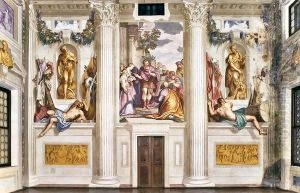Gian Battista Zelotti Paintings
Gian Battista Zelotti, also known as Giovanni Battista Zelotti, was an Italian painter of the Renaissance period, born in 1526 in Verona, Italy, and died in 1578. Zelotti was a contemporary and collaborator of Paolo Veronese and Benedetto Caliari, participating in the vibrant artistic scene of Venice and Verona during the 16th century. His work is often mentioned alongside these renowned artists, highlighting his significance in the period's artistic movements.
Zelotti's early training is not well-documented, but it is believed that he was initially influenced by Antonio Badile, an early Veronese painter, and later by Giovanni Francesco Caroto. His style, however, came to be closely associated with that of Paolo Veronese, suggesting that he may have worked in Veronese's workshop or at least been significantly influenced by him. This connection is evident in Zelotti's use of color, composition, and his approach to depicting narratives, which bear a resemblance to Veronese's work.
Throughout his career, Zelotti was known for his fresco paintings, which adorn many buildings and villas throughout the Veneto region. Among his most famous works are the frescoes in Villa Emo in Fanzolo and Villa Soranza in Castelfranco Veneto. These works showcase his ability to integrate architectural elements with vibrant and dynamic compositions, filled with classical themes and figures, reflecting the humanist interests of the time.
Zelotti's contribution to the art world extends beyond his frescoes. He also produced a significant number of religious paintings, altarpieces, and portraits, which were praised for their expressive figures and detailed landscapes. His works can be found in various churches and collections across Italy, demonstrating his versatility and skill in different mediums.
Despite his achievements, Gian Battista Zelotti's name is often overshadowed by his contemporaries, such as Veronese and Titian, in discussions of Renaissance art. However, his work plays a crucial role in the development of Venetian painting in the 16th century, contributing to the richness and diversity of the Renaissance artistic landscape. His legacy is seen in the continuation of the Venetian tradition of fresco painting and in the influence he had on subsequent generations of artists.
